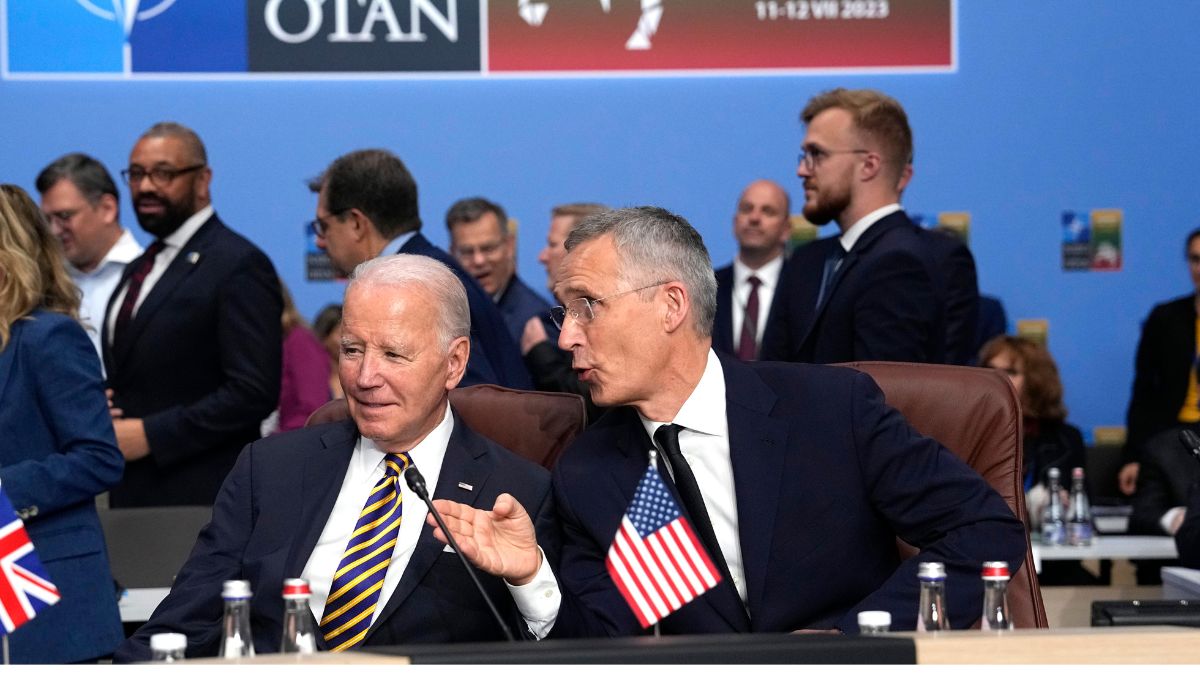As NATO marks its 75th anniversary, leaders from its member states convene in Washington on Tuesday (July 9) for a three-day critical summit amid rising global challenges and uncertainties about the alliance’s future direction.
Apart from the 32 NATO nations, the summit will also see representation from Australia, Japan, New Zealand and South Korea who have been invited, giving a glance into the growing diplomatic importance that the Indo-Pacific region holds. “The closer that authoritarian actors align, the more important it is that we work closely with our friends in the Indo-Pacific,” NATO Secretary General Jens Stoltenberg said.
Founded in 1949, NATO was created to provide collective defence against the Soviet Union. Today, the alliance faces new threats and internal political dynamics that could shape its future.
The possibility of a potential return of former US President Donald Trump, known for his critical stance on NATO, looms large over the summit. European diplomats are already preparing contingency plans, concerned that Trump could weaken US commitments to the alliance and undermine transatlantic unity if he wins the 2024 US presidential election.
We take a look at what challenges NATO is looking at:
War in Ukraine will take up most of agenda
The war in Ukraine is set to dominate discussions. Despite Ukraine’s hope for NATO membership, the alliance has not extended a formal invitation, opting instead for bilateral security deals and accelerated transfers of military aid.
Impact Shorts
More ShortsStoltenberg highlighted the importance of unity and deterrence, stating, “The United States is home to a quarter of the world’s economy, but combined, NATO allies have half of the world’s economy and half its military might.”
Outgoing Stoltenberg will hand over his role to former Dutch Prime Minister Mark Rutte, who has called for European nations to adapt to political changes in Washington. “We should stop moaning and whining and nagging about Trump,” Rutte said earlier this year. “We have to work with whoever is on the dance floor.”
That will lead to more defence spending
NATO has made substantial progress since the Madrid summit, enhancing defence and deterrence in response to Russia’s invasion of Ukraine.
Allies have increased defence spending, modernised command structures, and integrated new members Finland and Sweden. The Washington summit will focus on ensuring the alliance is prepared for both immediate and protracted conflicts.
NATO leaders will discuss the need for “more cash, more combat power, more capabilities, and more cooperation.” This includes continued increases in defence spending beyond the 2 per cent GDP target, addressing personnel shortfalls, and filling gaps in critical capabilities such as air and missile defence, cyber defence, and space-based systems.
The Defence Production Action Plan, agreed upon in Vilnius, will be reviewed to boost industrial capacity and support Ukraine.
A possible 2.0 Trump-sized hurdle
US President Joe Biden, who has stated the importance of alliances, faces a formidable challenge from Trump, whose previous term raised concerns about NATO’s future. Trump has criticised NATO as a burden on the US, despite recent increases in defence spending by European allies.
“America’s alliances are our greatest asset,” Biden stated, contrasting sharply with Trump’s transactional approach.
Diplomats are aware that Trump might cut off military support to Ukraine, which has already faced delays due to political wrangling in Congress. Stoltenberg has been working to ensure the alliance itself leads in coordinating military assistance for Ukraine, rather than relying solely on the US.
A proposed commitment of 40 billion euros per year in military aid to Ukraine aims to “Trump-proof” support for the war-torn nation.
“This election is doing more to discredit American democracy than [Russian President] Vladimir Putin and [Chinese President] Xi Jinping could ever hope to,” wrote Sergey Radchenko, a historian at the Johns Hopkins School of Advanced International Studies, on social media.
“I am worried about the image projected to the outside world. It is not an image of leadership. It is an image of terminal decline.”
Political shifts all across major European economies
Political shifts in Europe, including the rise of far-right parties sceptical of NATO, add to the alliance’s challenges.
Recent elections in France and gains by the far-right party under Marine Le Pen highlight this trend. However, there are also positive signs, such as Italy’s right-wing populist Prime Minister Giorgia Meloni’s strong support for NATO.
New polling by the European Council on Foreign Relations shows a growing disconnect between Ukrainians and other Europeans regarding the war’s outcome. While nearly 60 per cent of Ukrainians believe in outright victory, only 30 per cent of other Europeans think the conflict will end in a diplomatic settlement.
As NATO leaders gather in Washington, the array of issues comprise strengthening defence and deterrence, ensuring continued support for Ukraine, and adapting to political changes both within the US and Europe.
Also Read: Mark Rutte will be next NATO chief. Who is the outgoing Dutch PM?
“This summit will be very different from the initial plans because it is happening at a critical juncture for European security,” an unnamed European official told AFP. “Russia is today in a situation which is quite comfortable. They think they can simply wait it out.”
With inputs from agencies
)